Panasonic Viera TX-L42ET5B Review
Panasonic Viera TX-L42ET5B
The first TV from Panasonic’s 2012 range is here. And it’s neither a plasma model nor even all Panasonic’s own work. Go figure.
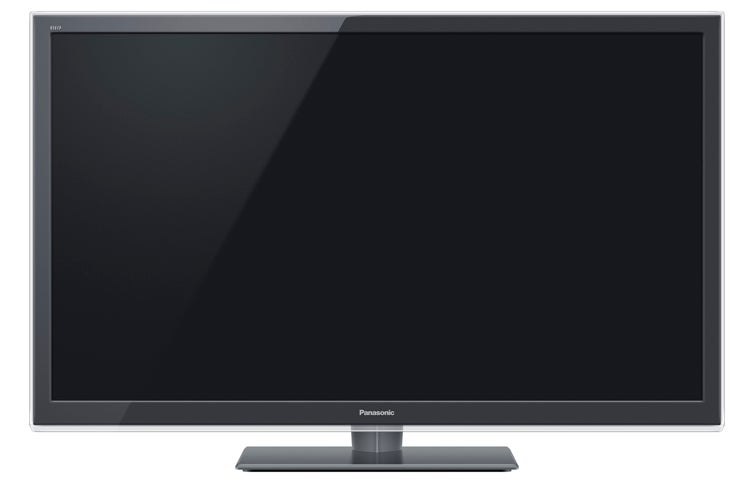
Verdict
Pros
- Nice looks
- Convenient, affordable and relatively untiring 3D
- Some good online features
Cons
- 3D images can look ‘stripey’
- Standard def images could be better
- Input lag could trouble gamers
Key Specifications
- Review Price: £749.00
- 42in LCD TV with edge LED lighting
- ‘300Hz’ motion reproduction
- passive 3D, four pairs of glasses included
- Viera Connect online functionality
- integrated wi-fi
If you’d said to us a couple of years ago that a Panasonic range debutant would use passive rather than active 3D technology, and LCD tech rather than the brand’s beloved plasma, we’d have laughed in your face.
Yet here we are at the start of Panasonic’s 2012 TV launches with the Panasonic L42ET5 sat on our test benches: a 42in LED TV with passive 3D technology onboard. Wowza.
Basically, it would seem Panasonic has had to wake up and smell the coffee. For while plasma still has a well-deserved following, you just can’t deny the commercial reality that many people can’t think beyond LCD, even where large screen sizes are concerned. And while we have plenty of sympathy with qualitative arguments in favour of active 3D, there’s a large and entirely justified market for the simplicity, affordability and comfort of the passive 3D format.
Panasonic has even confessed to a technical/commercial reason for going the passive 3D route. Namely that it’s become increasingly convinced that you can’t do active 3D using a 100Hz panel (something borne out last year by Sony’s disastrous EX7 series). Which effectively means you can’t do active 3D on a really affordable LCD TV. 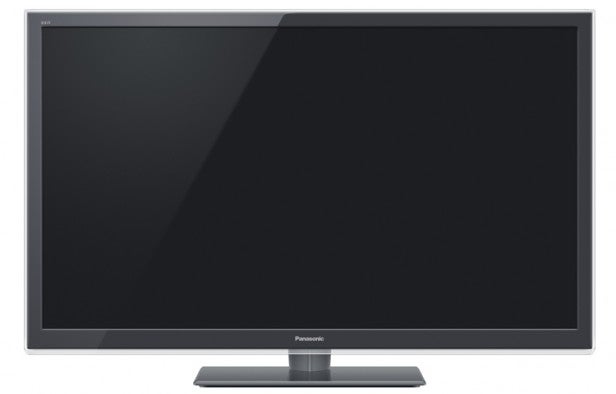
This explanation, or excuse, for going passive sounds a bit odd given that the Panasonic L42ET5’s spec sheet claims a “300Hz” system. But as with many such apparent fast refresh-rate claims, the reality is that the screen’s native refresh rate is 100Hz; the 300Hz bit comes from the way this combines with a blinking backlight.
We should add here that Panasonic hasn’t given up on its core values in any way. Far from it. It has an extensive and radically improved plasma range coming our way too, and the ET5 series is its only passive 3D offering, with multiple series of active 3D models elsewhere in the brand’s range. But it just so happens that the ET5 is the first new set to explode out of Panasonic’s warehouse, so let’s find out how this out-of-the-comfort-zone model shapes up.
It starts off very well, thanks to aesthetics that rank among the very best Panasonic has delivered. The smoky grey colour of the bezel makes a pleasant change, but this is given extra lustre by the application of a nice high-gloss finish that extends slightly beyond the main bezel to deliver a cool little transparent outer trim.
The set is surprisingly well connected, too. Particularly welcome is an integrated Wi-Fi system – though the set also has a wired LAN if you don’t have a wireless system set up in your home. There are also four v1.4 HDMIs, a D-Sub PC port and a handy trio of USB ports through which you can play a fairly good selection of video, music and photo formats. These include JPEG, MP3, .mov, .qt, .divx, .avi, .mkv. wmv, .m4a and most MPEG-related file types.
It’s worth adding, too, that the L42ET5 has an SD slot, so you can play the same multimedia files from SD cards if you prefer these to USB storage devices. And still more good multimedia news finds the Panasonic L42ET5 able to stream files from networked DLNA PCs.
All this and we haven’t considered yet possibly the most key component of the L42ET5’s multimedia functionality: its Viera Connect platform. For the first time with a Panasonic TV, this includes a (rather hidden away, slightly buggy but well presented) Web browser rather than just restricting you to Panasonic’s ‘walled garden’ of content.
You can access your own multimedia content via a dedicated Viera Tools button on the Panasonic TX-L42ET5 remote control, or Panasonic’s online functionality via the remote’s Internet button. Internet content is accessed using a system that initially looks the same as that used for 2011’s Smart TVs. Which is to say you get nine content-access icons on screen at once, along with the option to ‘dive down’ through subsequent screens of other icons to explore all the available apps and services.
The icons are large and easy to read, which is good, and you can also decide what apps you want to appear on your ‘home’ screen. But even so, as noted with last year’s Panasonic Smart TVs, we can’t shake the feeling that the current approach will become increasingly unwieldy as Panasonic’s online platform expands.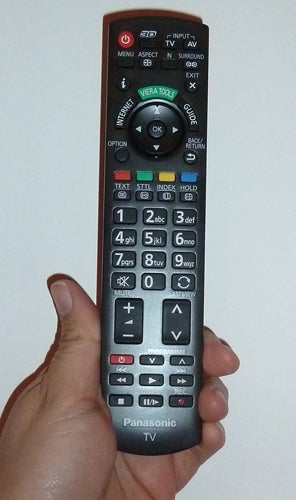
Fortunately Panasonic’s online interface shifts up a few gears if you head for the marketplace app store. Here you’ll find buyable/downloadable apps and accessories much more effectively organised, complete with sensible navigational shortcuts.
Looking for content on the Viera Connect platform, the opening spread of icons includes such pleasing big hitters as BBC News, BBC iPlayer, YouTube, EuroSport, and Skype (via an optional extra webcam). There’s also a new app for Fetch TV, another on-demand TV and film streaming platform where you just buy what you want to watch when you like.
It has to be said that content levels on this service are hardly inspiring right now, with precious little A-list content. But we guess things will likely/hopefully improve fairly swiftly.
More exciting is the addition of Netflix to the second “page” of the Viera Connect service, which joins AceTrax in offering a more fully developed content list than Fetch TV. This second page also provides access to Twitter and Facebook apps, Euronews, CNBC Real Time, and DailyMotion.
Page three’s highlights are the PICASA photo sharing service, Aupeo, iConcerts, and the Aupeo! personal radio app. Moving down to page four (see how tedious this could become?!), you get… nothing. Just blank squares. All ready to be filled by optional apps you can download from the Viera Connect Market. 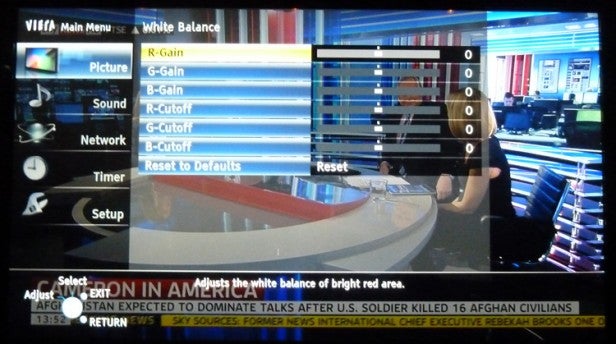
Some of the apps in this market are already interesting. Gameloft, for instance, has delivered a trio of games – Asphalt, Let’s Golf 2, and UNO – with surprisingly good graphics that can be played against other Viera TV users online. These can download to inserted SD cards for quicker access, with the downloading interface proving mercifully straightforward and letting you continue to watch TV while the download process takes place.
Other optional apps of note include Indian cinema service BIGFlix VOD, the Break Comedy service, UStream TV, Viewster, Vimeo, Red Karaoke, the MLB.tv subscription major league baseball channel, and a couple of potentially cool fitness apps: a Withings one that allows Wi-Fi scales to automatically communicate your weight to the TV so it can chart your weight loss and BMI; and an iFit Live one that lets you connect iLive fitness devices via Viera Connect for – and we quote from the app itself – “a seamless experience of Google Maps and other iFit workouts”.
It’s a pity the sort of hardware accessories to support these fitness apps aren’t currently available in the Shopping section of the Viera Connect market, but they’ll doubtless appear at some point. This shopping section does at least feature a few joysticks for enhancing your gaming, keyboards for making life (much) easier if you’re a regular user of the web browser, as well as the option to buy a Skype camera and pairs of 3D glasses (though only Panasonic’s active models, ironically).
The online features described above are going to be joined later in the year, too, by such intriguing fare as Disney Books and MySpace.
So, finally, we get to the Panasonic TX-L42ET5’s performance. And provided you’re watching HD content on it, it’s rather good. Even if it doesn’t feel always like a typical Panasonic LCD TV…
With 2D HD, for instance, detail levels look impressively high, with good skin textures and decently – if not amazingly – subtle depiction of marginal colour tone shifts. This impression of clarity is helped, moreover, by the set’s likably clean motion handling. There’s some marginal blur before calling in Panasonic’s Intelligent Frame Creation system, but this and judder can both be reduced using the IFC’s ‘Min’ setting without making the picture look processed or glitchy.
HD pictures look punchy and vibrant too, thanks to a nice combination of high brightness levels, pleasingly intense colours and surprisingly natural, deep black levels. HD pictures look clean and noise-free too, and we could see nary a trace of the horizontal line structure of the passive 3D filter over 2D material.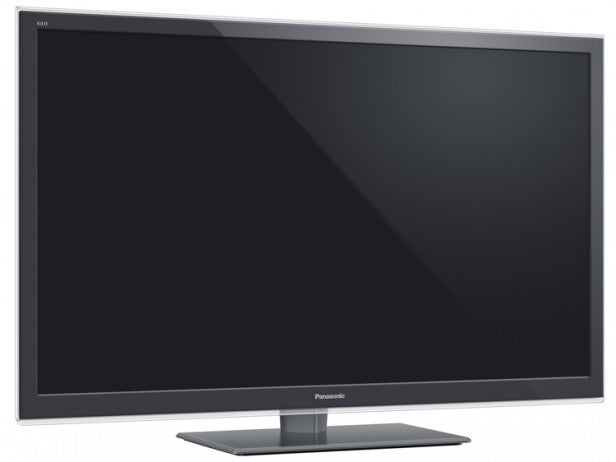
Even when watching 3D footage from a typical viewing distance, the presence of the filter isn’t overwhelming. You can just about make out some striping and jaggedness around small, stand-out bright objects, but you don’t feel as regularly aware of “missing lines” of picture information as you do with much larger passive 3D TVs. So the Panasonic L42ET5 again, as with LG’s passive sets, suggests that 42in is the optimum size for passive 3D TV technology.
Let’s not forget, either, about those key passive 3D attractions of cheap glasses and a more relaxing, flicker-free experience, both of which are delivered by the Panasonic L42ET5.
We guess the L42ET5’s passive technology can be argued to help it keep crosstalk in check too. It would be misleading to say there’s NO crosstalk with the TV’s passive 3D system – there is a little evidence of it from time to time. And if you watch from as little as 12 degrees above or below the screen, crosstalk goes through the roof. But crosstalk is certainly generally less aggressive than it is on most budget active 3D TVs, contributing to what is overall a really enjoyably natural, relaxing 3D experience.
The Panasonic L42ET5’s 3D images look bright and vibrant too – another advantage of the passive glasses. However, passive 3D does have a significant downside, namely that HD 3D pictures don’t look as polished, smooth and detailed as they do on a good active 3D set. Instead they look a touch rough and ready, for want of a better description. But there are certainly plenty of people who would take this disadvantage in return for the practical and financial advantages of the passive format.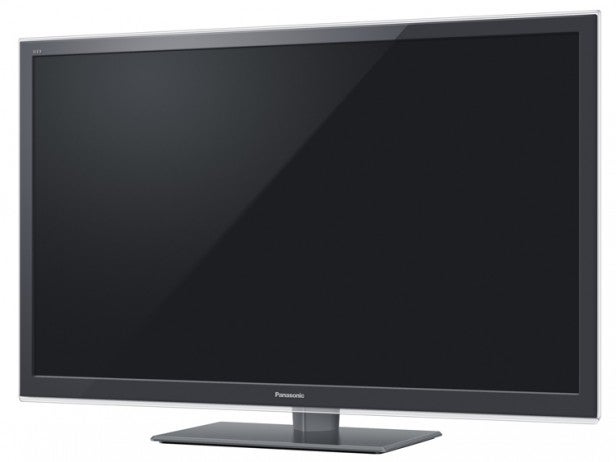
Another area where the L42ET5 doesn’t excel is with standard definition 2D footage. Non-HD Freeview broadcasts look a bit soft and noisy, and the set’s colour range seems to decrease – all traits we’d actually usually associate more with LG TVs than Panasonic ones, interestingly enough.
One final problem we detected with the L42ET5 is that it produced a rather inconsistent input lag measurement during our tests that varied between 38ms and as much as 80ms. This higher measurement certainly has the potential to damage your gaming performance – and experience suggests that the blame for it lies with LG’s core panel.
Verdict
So long as you can feed it a good amount of HD content, the L42ET5 really is a very decent TV for its money. Especially as its sound quality is unexpectedly well-rounded and clean for such a slim design.
It admittedly feels a bit odd that some of the characteristics of the L42ET5’s performance are more reminiscent of the TVs from a brand other than Panasonic. But this is perhaps just a sign of the tech-sharing times rather than a reason to not like Panasonic’s passive 3D debutante.
Fans of Panasonic’s home-brewed LCD and plasma panels don’t need to worry, either; there are plenty of these waiting in the wings too.
Overall, we’d say the best thing to do with the L42ET5 is embrace the new level of diversity in Panasonic’s TV thinking, and celebrate that if LG’s passive 3D tech appeals, then you can now get it attached to other brands’ picture processing technologies and features.
How we test televisions
We test every TV we review thoroughly over an extended period of time. We use industry standard tests to compare features properly. We’ll always tell you what we find. We never, ever, accept money to review a product.
Trusted Score
Score in detail
-
Features 8
-
3D Quality 8
-
Value 7
-
Design 9
-
2D Quality 8
-
Sound Quality 8
Features
| Size (Inch) | 42in |
| Display Type | LED |
| Max. Resolution | 1920 x 1080 |
| Full HD 1080p | Yes |
| Digital Tuner | Yes |
| Freeview HD | Yes |
| 3D Ready | Yes |
| Refresh Rate (Hertz) | 100Hz |
Connectivity
| HDMI | 4 (v1.4) |
| Component | 1 |
| Composite | 1 |
| Scart | 1 (RGB) |
| Digital Audio Out | Yes (optical) |
| Headphone | 1 |
| Charging/Computer Connection | 3 |
| Ethernet | Yes |
| WiFi | Yes (built-in) |
Physical Specifications
| Height (Millimeter) | 604mm |
| Width (Millimeter) | 997mm |
| Depth (Millimeter) | 52mm |
| Weight (Gram) | 14.5g |

